To view photo images scroll right on laptop or down on Iphone
The North American Native Museum in Zurich, Switzerland interviews Ace on Karl Bodmer’s influence in his work.
Ace was recently interviewed for the exhibition Karl Bodmer – A Swiss Artist in North America (December 5, 2020 to April 4, 2021) at the North American Native Museum (NONAM) in Zurich, Switzerland. The interview has been edited into a video short installed in the exhibition that features artists, academics, curators and art historians addressing the work of Johann Karl Bodmer (1809-1893). Bodmer was an important Swiss-French printmaker, etcher, lithographer, zinc engraver, draughtsman, painter and illustrator. In 1832, he was invited by Maximilian of Wied-Neuwied, a German prince and explorer, to join an expedition up the Missouri River to document the flora, fauna and Indigenous tribes of the region.
Ace revealed in the interview that his first encounter with Bodmer’s work was seeing reproductions of his work in various publications on frontier artists that included George Catlin and Edward Curtis, but that his first in-depth encounter was viewing the set of aquatints at NONAM in the Bodmer Gallery in 2013. At that time Ace completed some small sketches directly from Bodmer’s work in the Gallery. When he returned to Canada, he was inspired by Bodmer’s depiction of two Mandan warriors wearing ceremonial moccasins with fur dusters. The result was Nigig Makizinan (Otter Moccasins) created in 2014, and the companion work Fox Tail Moccasins completed in 2016.
Ace noted that early exploratory voyages into Indigenous territories and subsequent encounters with Indigenous people was unquestionably problematic and that these periods of contact brought with it the damages of salvage archeology. The collection practices of both professional and amateur ethnographers and archaeologists is fraught with questionable underpinnings and misguided representations of Otherness. Furthermore, the salvage archeology paradigm resulted in mass removal of cultural objects from Indigenous peoples who were wrongly perceived to be on the cusp of colonial annihilation. Yet despite these obvious socio-political and ethical concerns, Bodmer’s work today is very significant to Indigenous tribes due to his detailed and finessed sketches of tribal objects of material culture. In some instances, Bodmer’s drawings are the only remaining and readily accessible visual record of many objects that no longer exist in the physical form or remain inaccessible and undocumented in remote museum collections, far from the tribes to which they once belonged. Therefore, the importance of Bodmer’s work is now in a realm of renewed significance, particularly in this period of Indigenous cultural reparation and resurgence.
Ace noted in the interview as well that for his specific contemporary art practice, Bodmer’s depictions are not about reproducing an object as an exact replica, but instead it is about leveraging inspiration from these drawings as a sounding board to creating contemporary new work that is relevant for today: a confluence between the historical and contemporary. For Ace, his response to Bodmer’s work is also about alluding to a subtle commentary on the inherent innovation of Indigenous cultures to adapt, move-forward, embrace new technology and materials while still maintaining a distinct cultural aesthetic and continuity with the past, present and future.
For Ace, Karl Bodmer’s work and impressive attention-to-detail remains an important cultural tome and creative source for contemporary artistic inspiration in our on-going collective quest for cultural reparation, reclamation and revitalization as Indigenous peoples.
NONAM Video (here)
Barry Ace, Artist, M’Chigeeng First Nation (CAN)
Cannupa Hanska, Artist, Mandan Hidatsa Arikara Nation (USA)
Will Hansen, Director of Reading Service and Curator of Americana Department at Newberry Library, Chicago, USA.
Prof. Dr. (Emeritus) for American literature and American studies University of Basel (CH)
For more information on Ace’s Bodmer inspired work (here).
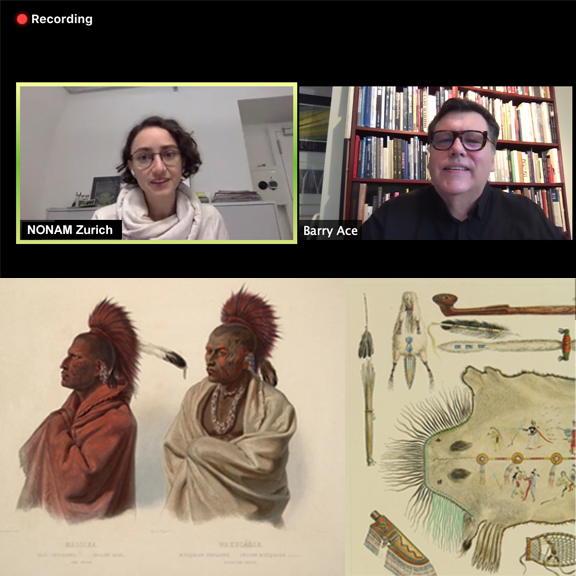
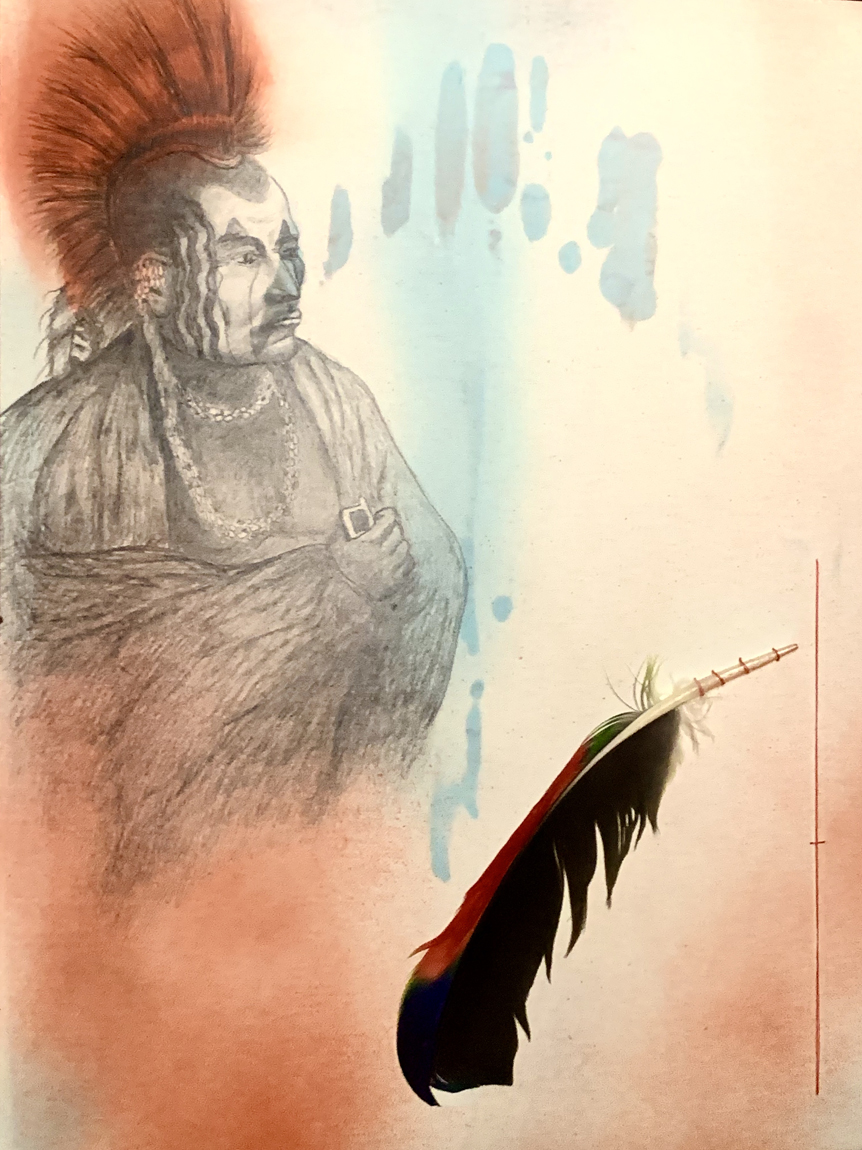 Bodmer Study by Barry Ace (2013) graphite, acrylic, feather, thread on paper 22 x 28 cm. Collection of the Artist.
Bodmer Study by Barry Ace (2013) graphite, acrylic, feather, thread on paper 22 x 28 cm. Collection of the Artist. 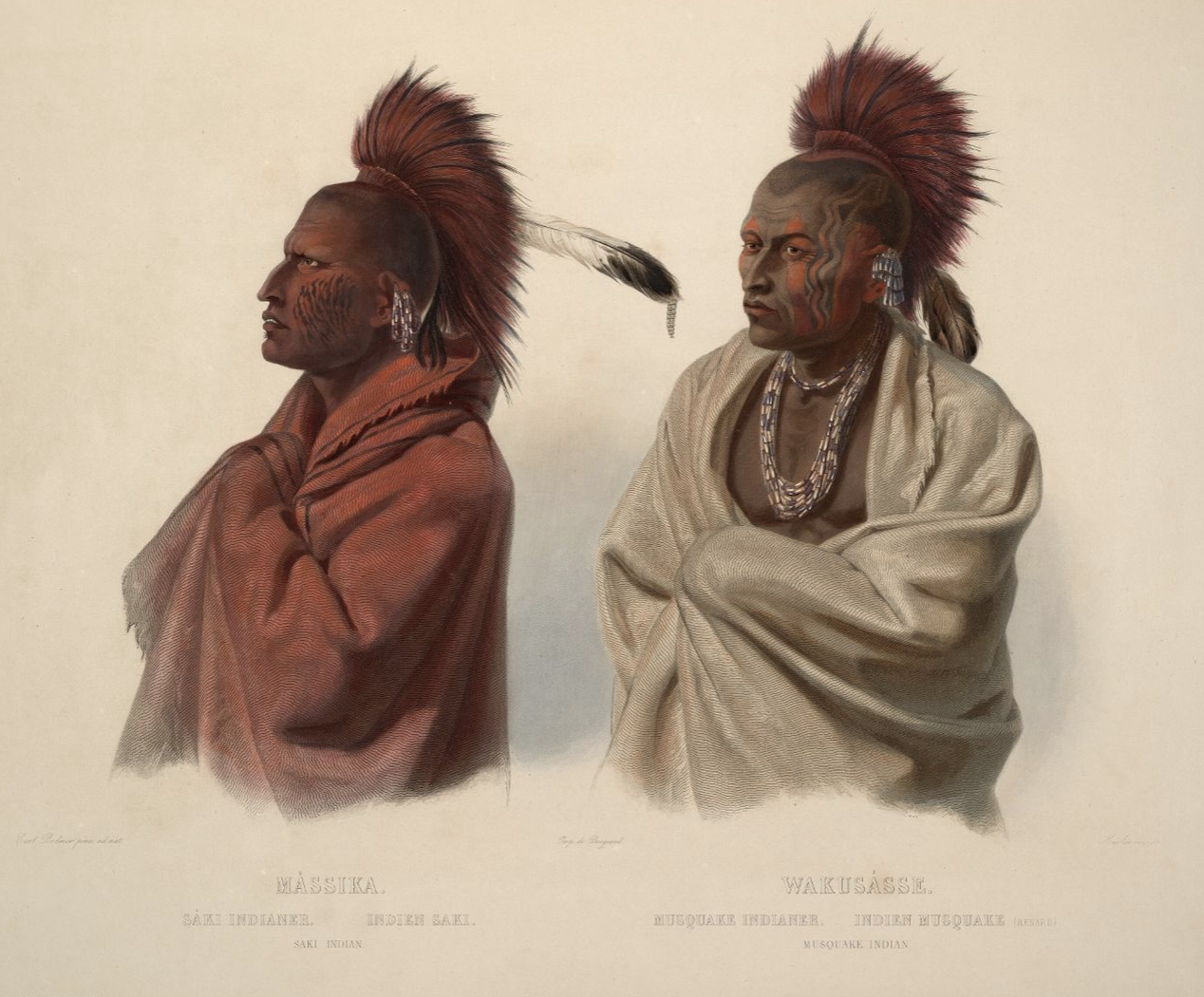 Karl Bodmer (1809-1893). Massika (Saki Indian) - Wakusasse (Musquake Indian), (1839-44) Aquatint.
Karl Bodmer (1809-1893). Massika (Saki Indian) - Wakusasse (Musquake Indian), (1839-44) Aquatint.  Bodmer Study by Barry Ace (2013) graphite, acrylic, quills, feather, thread on paper 22 x 28 cm. Private Collection (Ottawa).
Bodmer Study by Barry Ace (2013) graphite, acrylic, quills, feather, thread on paper 22 x 28 cm. Private Collection (Ottawa). 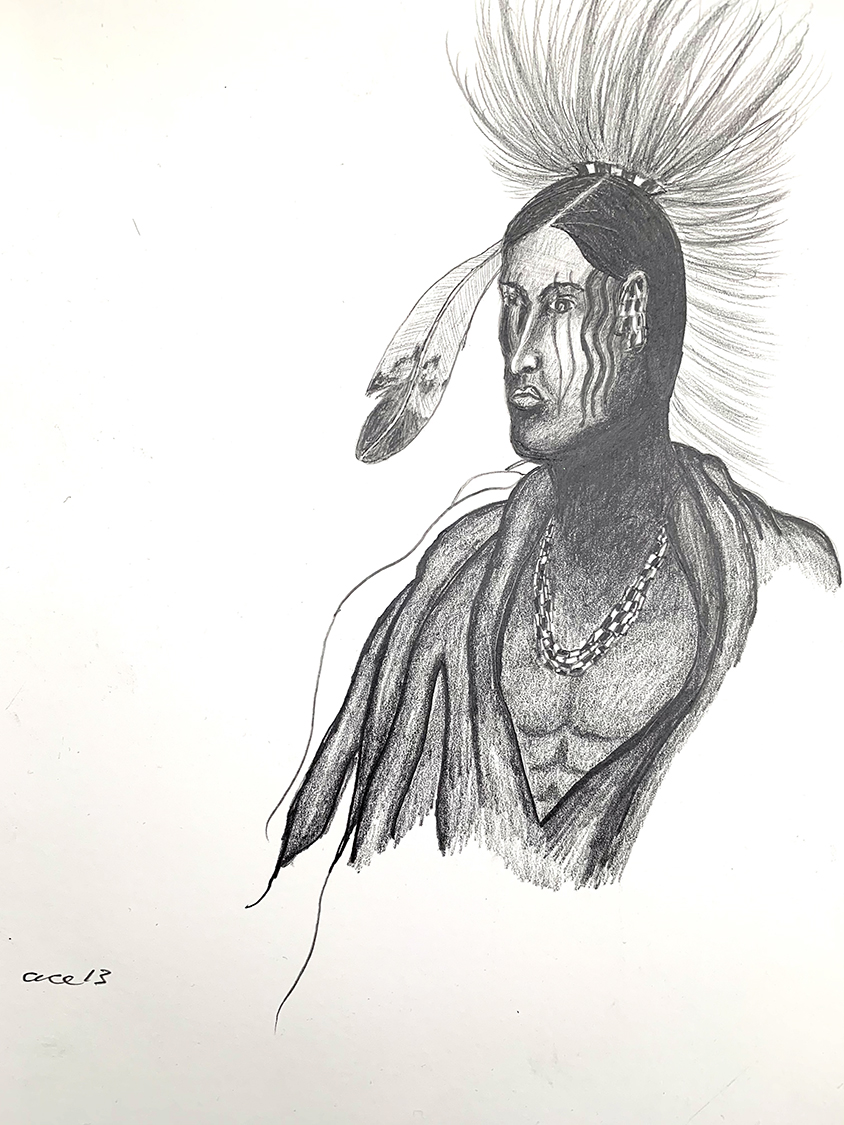 Bodmer Study by Barry Ace (2013) graphite on paper, 22 x 28 cm. Private Collection (Ottawa).
Bodmer Study by Barry Ace (2013) graphite on paper, 22 x 28 cm. Private Collection (Ottawa).  Karl Bodmer (1809-1893). Sih-Chida and Mahchsi-Karehde (1839-44), Aquatint.
Karl Bodmer (1809-1893). Sih-Chida and Mahchsi-Karehde (1839-44), Aquatint. 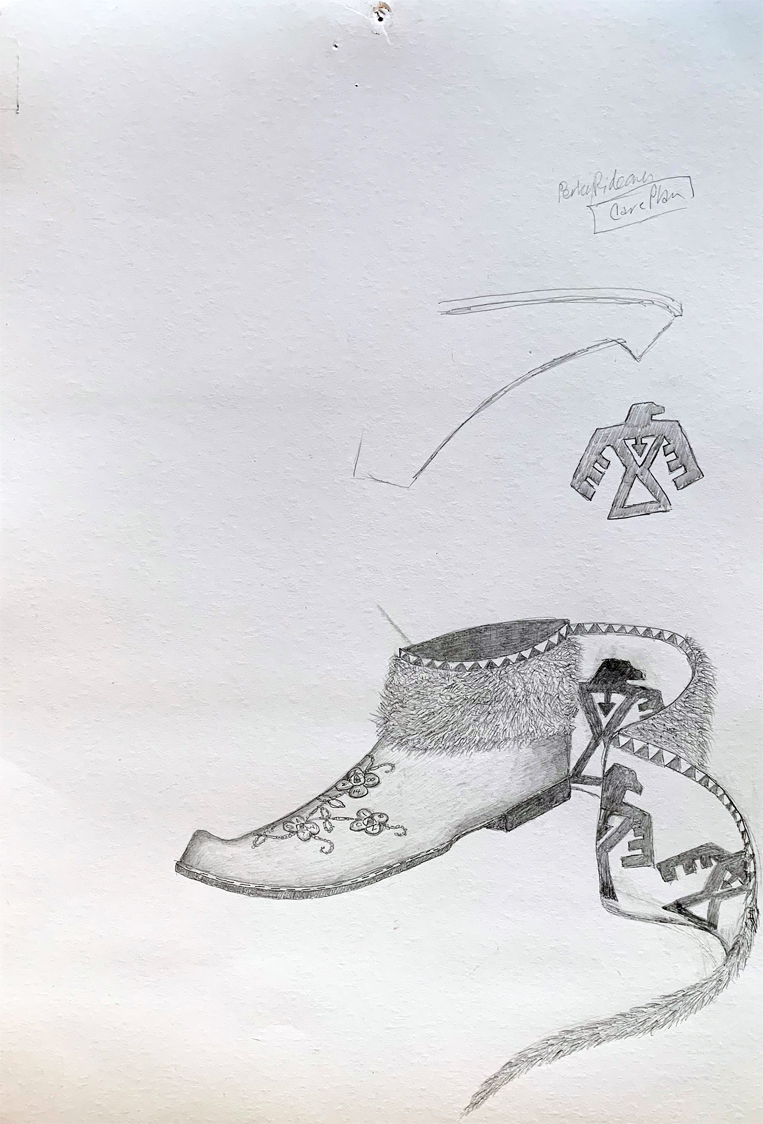 Bodmer Study by Barry Ace (2013) graphite on paper 33 x 48 cm. Private Collection (Ottawa).
Bodmer Study by Barry Ace (2013) graphite on paper 33 x 48 cm. Private Collection (Ottawa). 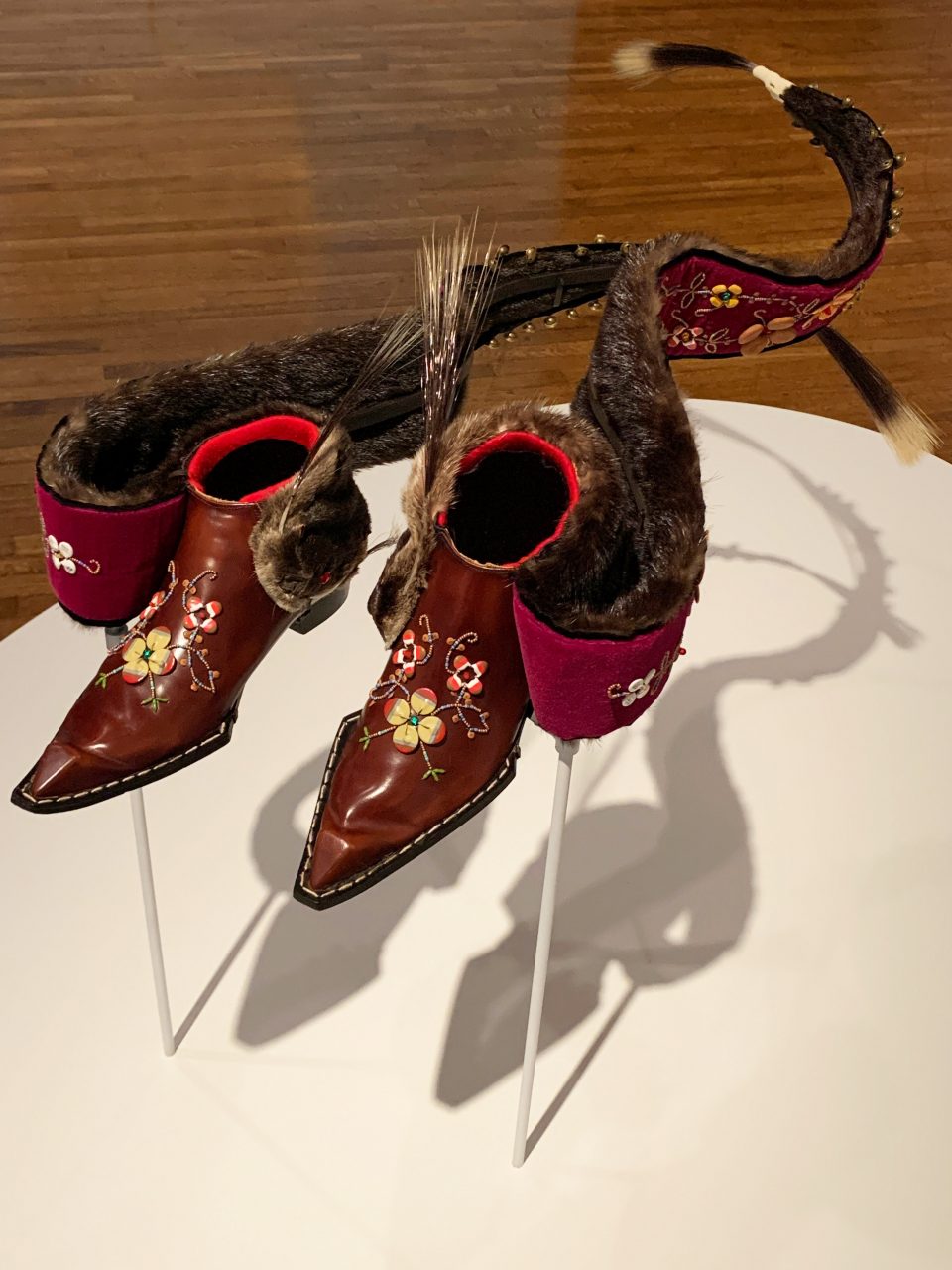 "Nigik Makizinan - Otter Moccasins" installed in Àbadakone at the National Gallery of Canada.
"Nigik Makizinan - Otter Moccasins" installed in Àbadakone at the National Gallery of Canada.  Fox Tail Moccasins (2016) Each 17.78 x 22.86 x 104.14 cm, mixed media. McMichael Canadian Art Collection (Kleinburg, Ontario). Photo: Courtesy of Heffel.
Fox Tail Moccasins (2016) Each 17.78 x 22.86 x 104.14 cm, mixed media. McMichael Canadian Art Collection (Kleinburg, Ontario). Photo: Courtesy of Heffel.